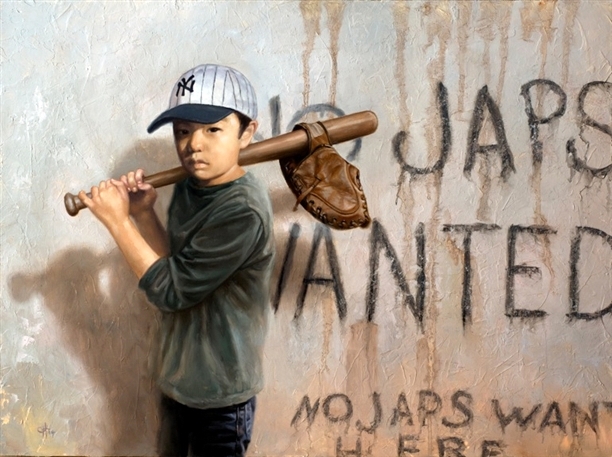Tags
book review, chris hopkins, george takei, history, indie box, Indie Comics, japanese internment, racism, sulu, they called us enemy, world war ii
Racism and oppression based on race are nothing new to the United States. It was written into our original Constitution, and we had a full-blown war over it not too many generations ago. Judging from current events, that war left wounds that are far from healed even more than a century later. But one of the most overlooked parts of American history is how this nation treated its citizens of Japanese descent during World War II.
It happened at the same time we still pat ourselves on the back for because we opposed the Nazis. The Third Reich was herding Jews into ghettoes and eventually death camps, and the USA was the hero with the ethical high ground for opposing such inhumanity. That might be the morally satisfying story your grandparents remember about WWII—unless they were of Japanese descent. Here in the States, we were herding American citizens into camps of our own.
In 2019, former Star Trek star George Takei published a graphic novel about his experiences as a child in those camps. The narrative is interesting for the way it shows his multiple perspectives on the events at different times in his life. As a child on a train to the camps for the first time, protected by his parents from the true horror, he initially sees the detainment with a child’s sense of wonder at being on some new adventure.
As a teenager developing a broader historical perspective, he rages at his father for not violently resisting the incarceration.
As an older man, George comes to understand that his father and mother did everything in their power to do what was best for their children in a horrific situation no one should ever experience. Only later in life did he realize how much it meant for his mother to smuggle a sewing machine.
They Called Us Enemy includes a few framing sequences. One portrays George giving a TED Talk, which seems to be his presentation from 2014 in Kyoto, Japan.
I don’t know about you, but I think if I lived through what George did as a child, I would be bitter for a damn long time. Maybe forever. But George’s memoir continues through rebuilding his life after the war, getting involved in theater, landing his role as Sulu, and making peace with his past through political advocacy, non-profit work, and speaking to new audiences.
One would hope that George’s efforts to educate about that period of American history will prevent us from repeating horrors of the past. But it is difficult to maintain such hope in a time when thousands of people are held in similar camps for attempting to cross our border, where hundreds of thousands of people work as slave labor in prisons in a country with the highest incarceration rate on the planet, and where millions of people of color are being systematically disenfranchised though racist voting laws, gerrymandering, and the dismantling of election oversight committees.
But that’s what I love about Takei’s graphic novel. It doesn’t present an easy solution. It gets you thinking. It reminds you that if you don’t want the USA to be a nation governed by racist policy, then you need to get involved. You can’t just sit by and do nothing. They Called Us Enemy is both a cautionary and inspiring tale for those of us who envision a country where, in the words of Martin Luther King, Jr., “children will one day live in a nation where they will not be judged by the color of their skin but by the content of their character.”
On a related note, I recently discovered a Chris Hopkins series of paintings and drawings about the people who lived through the internment camps, and they range from powerful to heartbreaking.

Chris painted the cover of one of my favorite editions of old pirate biographies, and he also brought the Tuskegee Airmen to life with his brushes. You might have seen Chris’ paintings for 1980s movie posters such as Indiana Jones and the Temple of Doom, Labyrinth, and Return of the Jedi. He currently has a gallery of dozens of paintings and drawings about the Japanese internment camps at http://www.chrishopkinsart.com/
One thing the Hopkins paintings cover that the Takei story does not is the rule that people sent to those camps could not bring their pets. As sad as it is to leave behind possessions and people, there’s something especially sad about leaving behind a best friend and companion who lacks the words and pictures to even comprehend what is happening.
Fortunately, George Takei and his artistic collaborators created words and pictures we can understand, relate to, and learn from. They Called Us Enemy is an educational yet personal account from a man who lived through the worst of times, and it deserves a place alongside Maus and March in your collection.
Shout out to my fellow blogger and comic-book enthusiast Ben Herman for introducing me to this book with his post about meeting George at a 2021 Comic Con.
Collector’s Guide: Available on Amazon in Kindle/Comixology format and paperback. Currently available in hardback on MyComicShop. George’s 1994 Pocket Books autobiography is also available at MyComicShop in paperback.








Pingback: Come on and Give It to Me: A Ragman Memoir | Mars Will Send No More
Pingback: Google Gemini is Trash | Mars Will Send No More